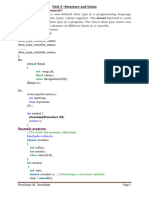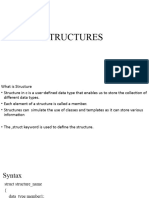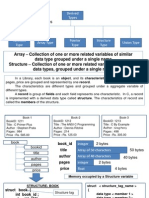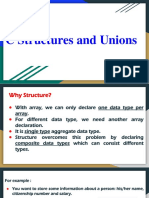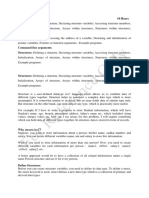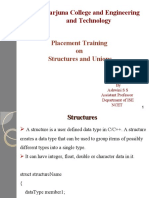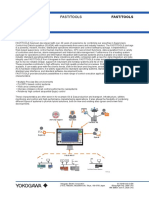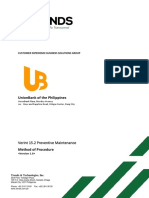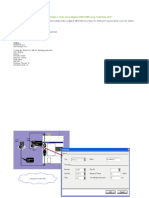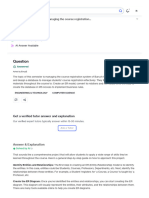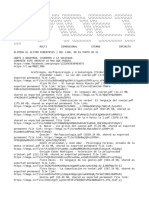0% found this document useful (0 votes)
7 views29 pagesStructure in C
The document explains structures and unions in C programming, detailing how to define and use them to store different data types. It provides examples of declaring structure variables, accessing their members, and using arrays and nested structures. Additionally, it contrasts structures and unions, highlighting their memory allocation differences and use cases.
Uploaded by
m40050272Copyright
© © All Rights Reserved
We take content rights seriously. If you suspect this is your content, claim it here.
Available Formats
Download as PPTX, PDF, TXT or read online on Scribd
0% found this document useful (0 votes)
7 views29 pagesStructure in C
The document explains structures and unions in C programming, detailing how to define and use them to store different data types. It provides examples of declaring structure variables, accessing their members, and using arrays and nested structures. Additionally, it contrasts structures and unions, highlighting their memory allocation differences and use cases.
Uploaded by
m40050272Copyright
© © All Rights Reserved
We take content rights seriously. If you suspect this is your content, claim it here.
Available Formats
Download as PPTX, PDF, TXT or read online on Scribd
/ 29










